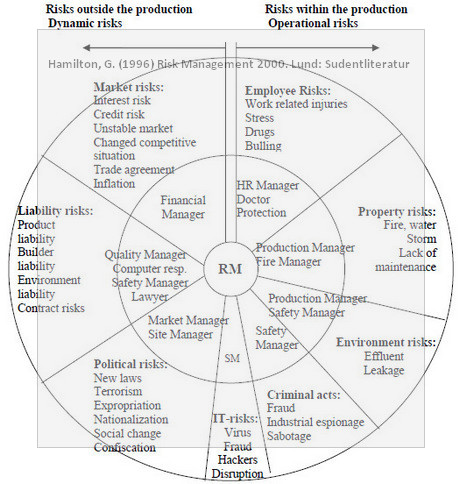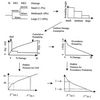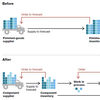 Searching for background information in my preparation for tomorrow’s lecture on supply chain risk, I was again reminded of an old acquaintance in risk management: Gustav Hamilton’s Circle of Risk. First conceptualized in 1974, Gustav Hamilton, the risk manager for Sweden’s State Company Limited, or Statsföretag AB in Swedish, created a “risk management circle,” graphically describing the interaction of all elements of the risk management process, from assessment and control to financing and communication. I have not seen it referenced in the international literature, but it does occur quite often in Swedish academic circles, and is frequently cited by both MSc and PhD students. Perhaps time to take a closer look?
Searching for background information in my preparation for tomorrow’s lecture on supply chain risk, I was again reminded of an old acquaintance in risk management: Gustav Hamilton’s Circle of Risk. First conceptualized in 1974, Gustav Hamilton, the risk manager for Sweden’s State Company Limited, or Statsföretag AB in Swedish, created a “risk management circle,” graphically describing the interaction of all elements of the risk management process, from assessment and control to financing and communication. I have not seen it referenced in the international literature, but it does occur quite often in Swedish academic circles, and is frequently cited by both MSc and PhD students. Perhaps time to take a closer look?
Holistic
I first came across Hamilton’s work in another Swedish work presented on this blog, “Säkra Företagets Flöden” or “Securing Your Company’s Flows” as I chose to translate it. This handbook is an excellent primer in risk management, business continuity, as well as supply chain risk and logistic challenges. The circle of risk is also referred to in Ulf Paulssons PhD, the DRISC model, and it is referred to in a 2004 MSc thesis from the University of Lund in Sweden, see link below. The latter I found while searching for the original 2001 Latour article in the Wall Street Journal on the Nokia Ericsson fire, an article I really would like to read, but have yet to find a hardcopy of.
The circle of risk
Hamilton’s circle of risk represents a holistic view of risks, risks drivers, types of risks, and who within an organization that is responsible for managing which type of risk.

This circle really shows how fragmented, yet interconnected risk management really is. The inside-outside or dynamic-operational risk perspectives are perhaps not very sophisticated, but the circle fully captures all facets of risk management.
Reference
Hamilton, G (1996) Risk Management 2000. Lund: Studentliteratur.
Artebrant, A; Jönsson, E. and Nordhemmer, M. (2004) Risks and Risk Management in the Supply Chain flow. Unpublished MSc in Master of Science in Industrial Management and Engineering, Lund Institute of Technology.












